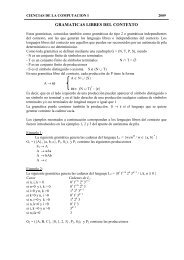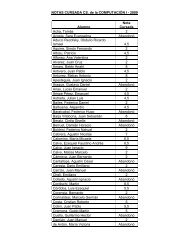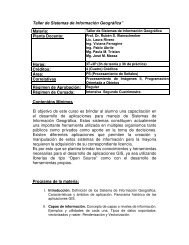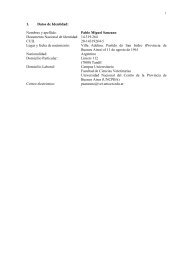Libro de Resúmenes / Book of Abstracts (Español/English)
Libro de Resúmenes / Book of Abstracts (Español/English)
Libro de Resúmenes / Book of Abstracts (Español/English)
Create successful ePaper yourself
Turn your PDF publications into a flip-book with our unique Google optimized e-Paper software.
Resumenes 109<br />
The mite show a preference to reproduce in drone cells, but soon<br />
become overcrow<strong>de</strong>d as the mite population increase. This leads to intermite<br />
competition for limited food and space (the carrying capacity)<br />
[5],[7],[8]. The drone cells available, in this work, are approximately 4% <strong>of</strong><br />
the worker cells.<br />
A yearly function based in empiric data, which can be adapted to<br />
different climatic regions, represent the brood bee cells available to the mite<br />
invasion during the year.<br />
This new mo<strong>de</strong>l, like others <strong>of</strong> the same type [1] allow to study the<br />
dynamic <strong>de</strong>tails as functions <strong>of</strong> the important biological parameters.<br />
Otherwise, the mo<strong>de</strong>l agree with the results in other mo<strong>de</strong>ls <strong>of</strong> Varroa<br />
Destructor used before, like discrete mo<strong>de</strong>l [2] [3] and continuous with lags<br />
[6].<br />
Finally, certain biological control strategy be evaluated as diminish<br />
the number <strong>of</strong> available drone cells, by replacing comb cells, to <strong>de</strong>crease<br />
the use <strong>of</strong> chemicals. This can be important for countries that produce and<br />
exports bee’s honey, because they must be adapted to the rigid<br />
international norms.<br />
The system <strong>of</strong> differential equation for the growth <strong>of</strong> the mite<br />
population is the following:<br />
Referencias<br />
dM<br />
= γ 1D<br />
+ γ 2W<br />
− µ M<br />
dt<br />
dD<br />
D<br />
= r1φ<br />
() t ( 1−<br />
ς ( D ) M ( 1−<br />
) − γ 1D<br />
− µ 1D<br />
dt<br />
K<br />
dW<br />
dt<br />
= r φ<br />
2<br />
() t ς ( D)<br />
M − γ W − µ W.<br />
In this work we take the preference function:<br />
D<br />
ς ( D)<br />
= θ + ξ .<br />
K1<br />
θ + ξ = 1.<br />
And a seasonal function which <strong>de</strong>scribe the laying rate as:<br />
N<br />
∑<br />
i=<br />
0<br />
2<br />
φ ( t)<br />
= Exp(<br />
−α<br />
( t −180<br />
− i365)<br />
).<br />
[1] Tiemi Takahashi, L., Maidana, N.A., Castro Ferreira Jr., W., Petronio, P.,<br />
Yang, H.M. (2005). Mathematical mo<strong>de</strong>ls for the Ae<strong>de</strong>s aegypti dispersal<br />
dynamic: travelling waves by wings and wind. Bulletin <strong>of</strong> mathematical<br />
biology 67. 509-528.<br />
[2] Wilkinson, D., Smith, G.C. (2002). A mo<strong>de</strong>l <strong>of</strong> the mite parasite, Varroa<br />
Destructor on Honeybees (Apis mellifera) to investigate parameters<br />
important to mite population growth. Ecollogical Mo<strong>de</strong>lling 148. 263-275.<br />
2<br />
1<br />
2


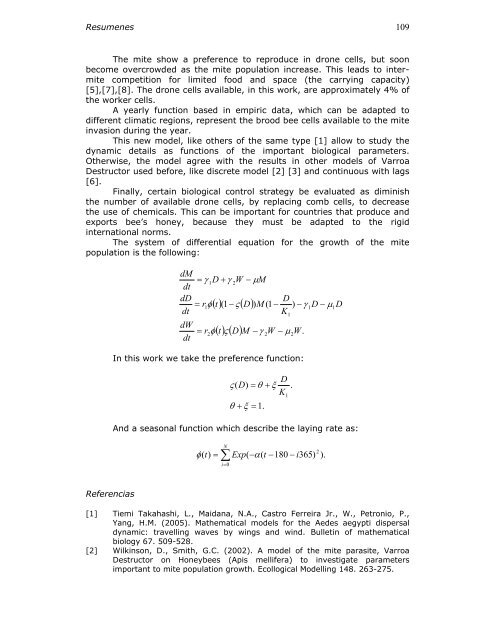
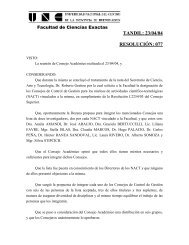
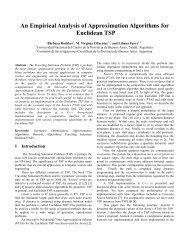
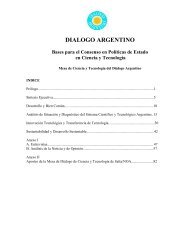


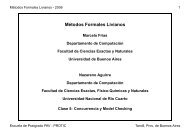
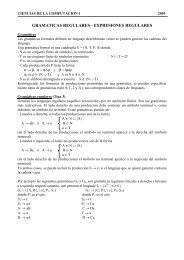
![Clase 13 [pdf]](https://img.yumpu.com/19616969/1/190x245/clase-13-pdf.jpg?quality=85)


